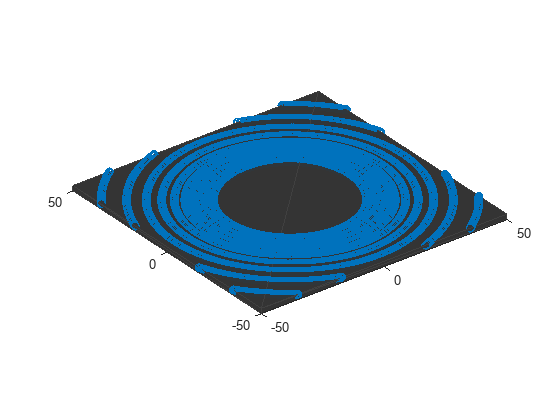robotLidarPointCloudGenerator
Description
The robotLidarPointCloudGenerator
System object™ generates detections from a statistical simulated lidar sensor. The system
object uses a statistical sensor model to simulate lidar detections with added random noise.
All detections are with respect to the coordinate frame of the vehicle-mounted sensor. You can
use the robotLidarPointCloudGenerator object in a scenario, created using a
robotSensor,
containing static meshes, robot platforms, and sensors.
To generate lidar point clouds:
Create the
robotLidarPointCloudGeneratorobject and set its properties.Call the object with arguments, as if it were a function.
To learn more about how System objects work, see What Are System Objects?
Creation
Description
lidar = robotLidarPointCloudGenerator
lidar = robotLidarPointCloudGenerator(Name=Value)robotLidarPointCloudGenerator(UpdateRate=100,HasNoise=false) creates
a lidar point cloud generator that reports detections at an update rate of 100 Hz without
noise.
Properties
Usage
Description
[
additionally returns ptCloud,isValidTime] = lidar(tgts,simTime)isValidTime which specifies if the specified
simTime is a multiple of the sensor's update interval
(1/UpdateRate).
Input Arguments
Output Arguments
Object Functions
To use an object function, specify the
System object as the first input argument. For
example, to release system resources of a System object named obj, use
this syntax:
release(obj)
Examples
Version History
Introduced in R2022a
See Also
robotPlatform | robotScenario | robotSensor | extendedObjectMesh | pointCloud
